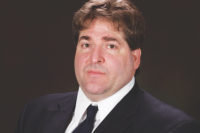So, a technician should not only fix the problem but also, to the best of his ability, ensure the system operates reliably. This means once a technician identifies the system problem, he should try to discover why the failure occurred and what can be done to prevent it from happening again.
A good technician is like a good detective. Once he finds the root cause of the problem, he tries to discover why or how it happened. Sometimes the “why” is easily discovered. At other times it’s not so easy. And sometimes it’s very difficult or even impossible to discover.
A technician should always make the extra effort and try to discover the “why.” This means he may need to spend a little extra time on the job to inspect the system and the failed component.
How much extra time should be spent looking into the system further? That depends on the system and the customer. Re- pairing refrigeration systems is a business and, like all businesses, common sense must prevail in how a system is repaired and how much time needs to be spent doing it. A technician must judge how much extra effort is justified for the repair he is performing.
DISCOVERING THE WHY
What can a technician do to try and discover the “why”?One way is to open up the failed component to see what is defective inside.
Another way is to reinspect the system after the repair has been made and see if there are other issues with it.
A technician can call for help and get advice from other technicians. Maybe they have seen the problem before and know the reason “why” it occurred.
If needed, a technician can call the system manufacturer or the local distributor for help.
FOR EXAMPLE
Here is an example of how a technician can give a little extra effort and find the “why.”A compressor fails. Normally this is quite easy for a technician to discover. But why did it fail? Many times a system problem is the cause of a compressor failure. After replacing the compressor, a technician takes some extra time to examine the system. He discovers the thermostatic expansion valve is defective, causing liquid refrigerant to return to the compressor. The technician replaces the expansion valve and saves the replacement compressor from certain failure.
On another service call a technician discovers a frozen evaporator which was caused by a defective defrost timer. The technician replaces the timer and after examining the system also discovers the defrost termination switch is defective and has been disconnected. The system had been terminating defrost based on time and not temperature, as originally designed. The technician replaces the defrost termination switch and prevents the system from possibly over defrosting.
Become a better technician and ask the “why.” Your customers will appreciate the extra effort and rave about you and your company.
Publication date:05/11/2009






